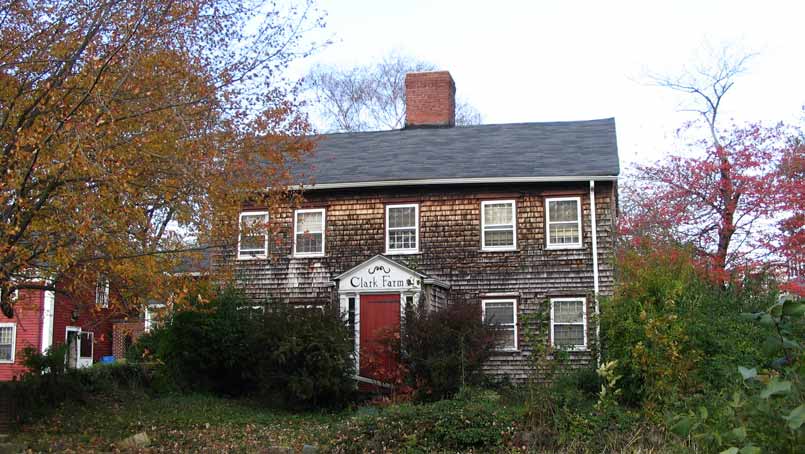
May 18, 2018 Fowler-Clark-Epstein Transformation “Makes History”
by Dorothy A. Clark
 Our guest blogger, journalist and historian Dorothy Clark, received her master’s degree in design studies/historic preservation in 2016 from the Boston Architectural College. She is editor of Historic New England Magazineand is an independent researcher.
Our guest blogger, journalist and historian Dorothy Clark, received her master’s degree in design studies/historic preservation in 2016 from the Boston Architectural College. She is editor of Historic New England Magazineand is an independent researcher.
How history is made isn’t always the result of momentous events. Very often, it is the passing down of a legacy and the ongoing stewardship of that inheritance that determines historical import. A prime example of this history-making process is the Fowler-Clark-Epstein Farm. A part of Boston’s landscape since the late 18thcentury, this once obscure property has been transformed from a blight spot in its Mattapan neighborhood into a community institution with a bright future.
When I learned of the existence of the Fowler-Clark-Epstein Farm in 2013, I was surprised, for a few reasons. For one, there are few historic sites for which Mattapan is recognized, none that would draw tourists to that part of Boston. I had attended elementary school just a few blocks away and had no idea that this colonial-period farmhouse with its big red Victorian-era barn were nearby (although being in grade school, the uniqueness of the property probably would not have registered with me). Later, as a teenager growing up in Mattapan, I don’t think I ever even saw the property; surely if I had, I would have remembered the sign over the front door that bore my last name. In truth, there was really no reason that the former farm’s history would be widely known because the quaint house and barn at 487 Norfolk St. was a private residence that had never been publicized as a historical site. That, no doubt, was how the Epsteins—Jorge and Ida—wanted it. For Jorge Epstein, who operated a part of his architectural salvage business from his yard, it was the history of the stuff that he stored on his property, not the history of the property itself, which he advertised.

Upon visiting the property, I wondered why this out-of-place-looking site had never caught my eye, considering the number of times I had driven on Norfolk Street. It had been obscured, set back from the street and partially hidden by garden masonry and fencing that Jorge Epstein had fashioned as well as by trees and overgrown shrubbery, nestled among a variety of architectural styles: brawny, late-Victorian-era residences, early-20th-century three-deckers, nondescript midcentury brick apartment buildings and compact modern single-family houses. The Fowler Clark Epstein Farm was easy to miss. It took abandonment, dilapidation and near loss to a developer’s wrecking ball for this gem of a property to garner the type of recognition and attention that would save it and give a vibrant role in the community.
I decided that the Fowler-Clark-Epstein Farm would be the perfect topic for my master’s degree capstone project at the Boston Architectural College. Initially, I thought of my idea as a novel little notion with a relatively straightforward outcome: the preservation of an endangered historic site that was once part of a large farm, devoting its substantially smaller landscape to urban agriculture. I perceived it simply as saving a part of the built environment that would recall the area’s long-passed agrarian tradition. I did have a slight sense that I was onto something potentially much bigger, in part because Boston had recently adopted a zoning provision that allowed for urban farming. As I delved into the research for my capstone project I began to see to see that my idea was relevant not only to historic preservation but that it might also address some contemporary social concerns, not only in Boston but also around the country.
Now Mattapan is home to a premier historic site, the steward of an important Boston legacy. This place of pride is the headquarters of the Urban Farming Institute of Boston, which, in addition to growing food at the property, will serve as an urban farming education and training center. Rehabilitation of the Fowler-Clark-Epstein Farm shows the past at work today for the future. It is a testament to how history is made.



